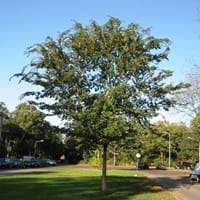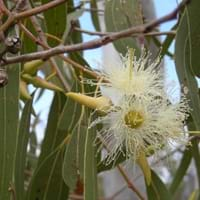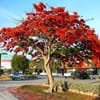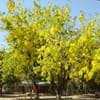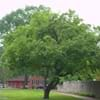Life Span
Perennial
Perennial
Origin
Eastern Asia
Australia
Types
Ulmus chumlia, Ulmus glabra, Ulmus elongata
Eucalyptus absita, Eucalyptus acies, Eucalyptus calycogona
Number of Varieties
Not Available
Habitat
River side
River side
USDA Hardiness Zone
5-9
9-10
Sunset Zone
3a, 3b, 4, 5, 6, 7, 8, 9, 10, 11, 12, 13, 14, 15, 16, 17, 18, 19, 20, 21, 22, 23, 24
5, 6, 8, 9, 10, 11, 12, 13, 14, 15, 16, 17, 18, 19, 20, 21, 22, 23, 24
Habit
Upright/Erect
Oval or Rounded
Flower Color
Red
Pink, Red, White
Flower Color Modifier
Bicolor
Not Available
Fruit Color
Tan, Brown
Yellow Brown
Leaf Color in Spring
Green
Dark Green
Leaf Color in Summer
Dark Green
Gray Green
Leaf Color in Fall
Yellow, Red, Green
Gray Green
Leaf Color in Winter
Not Available
Gray Green
Plant Season
Spring, Summer, Fall, Winter
Winter
Sunlight
Full Sun, Partial Sun
Full Sun
Growth Rate
Not Available
Fast
Type of Soil
Loam, Sand
Well drained
The pH of Soil
Acidic, Neutral, Alkaline
Slightly Alkaline
Soil Drainage
Well drained
Well drained
Bloom Time
Fall
Early Summer, Spring
Tolerances
Drought
Drought
Where to Plant?
Ground
Ground
How to Plant?
Seedlings, Stem Planting, Transplanting
Stem Planting
Plant Maintenance
Medium
Medium
Watering Requirements
Average Water Needs, Requires watering in the growing season, Water when top layer of soil becomes dry
Requires regular watering, Requires watering in the growing season, Use and maintain water-efficient soaker hoses, Water Deeply, Water twice a day in the initial period
In Summer
Lots of watering
Lots of watering
In Spring
Moderate
Moderate
In Winter
Average Water
Average Water
Soil pH
Acidic, Neutral, Alkaline
Slightly Alkaline
Soil Type
Loam, Sand
Well drained
Soil Drainage Capacity
Well drained
Well drained
Sun Exposure
Full Sun, Partial Sun
Full Sun
Pruning
Prune if you want to improve plant shape, Remove damaged leaves, Remove dead leaves, Remove shoots
Prune for shortening long shoots, Prune if you want to improve plant shape, Prune ocassionally, Remove dead or diseased plant parts
Fertilizers
organic fertlizers
All-Purpose Liquid Fertilizer
Pests and Diseases
Mealybugs, Red blotch, Scale
Canker, head rot, Mealybugs, Root rot
Plant Tolerance
Drought
Drought
Flowers
Insignificant
Yes
Flower Petal Number
Single
Single
Fragrant Bark/Stem
No
Yes
Foliage Texture
Fine
Medium
Foliage Sheen
Glossy
Matte
Attracts
Not Available
Birds
Allergy
allergic reaction
Itchiness, Pain and fatigue, Respiratory problems
Aesthetic Uses
Bonsai, Landscape Designing
Not Used For Aesthetic Purpose
Beauty Benefits
Not Available
Not Available
Environmental Uses
Air purification, Food for birds, Food for insects, No fertilizer, pesticides, or herbicides needed, Prevent Soil Erosion
Air purification
Medicinal Uses
Antidote, Demulcent, Diuretic
Burns, Cough, Fever, Joint pain, Pulmonary tuberculosis, Upset stomach
Part of Plant Used
Fruits, Inner Bark, Leaves
Leaves
Other Uses
Used as firewood, Used for its medicinal properties, Used in construction, Used in Furniture, Wood is used for making furniture, Wood is used for ship building, Wood is used in construction
Oil is used as an industrial solvent, Oil is used in mosquito repellents, Used in paper industry
Used As Indoor Plant
Yes
No
Used As Outdoor Plant
Yes
Yes
Garden Design
Container, Feature Plant, Mixed Border, Shade Trees, Street Trees, Topiary / Bonsai / Espalier
Not Available
Botanical Name
ULMUS parvifolia 'Drake'
Eucalyptus
Common Name
Chinese Elm, Drake Elm
Eucalyptus
In Hindi
चीनी एल्म
नीलगिरी
In German
Chinese Elm
Eukalyptus
In French
Elm chinoise
Eucalyptus
In Spanish
olmo chino
Eucalipto
In Greek
Κινέζοι Elm
ευκάλυπτος
In Portuguese
Elm chinês
Eucalipto
In Polish
Chiński Elm
Eukaliptus
In Latin
Chinese Elm
Eucalyptus
Phylum
Magnoliophyta
Magnoliophyta
Class
Magnoliopsida
Magnoliopsida
Family
Ulmaceae
Myrtaceae
Clade
Angiosperms, Asterids, Eudicots
Not Available
Subfamily
Not Available
Myrtoideae
Number of Species
Not Available
Season and Care of Chinese Elm and Eucalyptus
Season and care of Chinese Elm and Eucalyptus is important to know. While considering everything about Chinese Elm and Eucalyptus Care, growing season is an essential factor. Chinese Elm season is Spring, Summer, Fall and Winter and Eucalyptus season is Spring, Summer, Fall and Winter. The type of soil for Chinese Elm is Loam, Sand and for Eucalyptus is Well drained while the PH of soil for Chinese Elm is Acidic, Neutral, Alkaline and for Eucalyptus is Slightly Alkaline.
Chinese Elm and Eucalyptus Physical Information
Chinese Elm and Eucalyptus physical information is very important for comparison. Chinese Elm height is 1,520.00 cm and width 1,220.00 cm whereas Eucalyptus height is 2.50 cm and width 32.81 cm. The color specification of Chinese Elm and Eucalyptus are as follows:
Chinese Elm flower color: Red
Chinese Elm leaf color: Green
Eucalyptus flower color: Pink, Red and White
- Eucalyptus leaf color: Dark Green
Care of Chinese Elm and Eucalyptus
Care of Chinese Elm and Eucalyptus include pruning, fertilizers, watering etc. Chinese Elm pruning is done Prune if you want to improve plant shape, Remove damaged leaves, Remove dead leaves and Remove shoots and Eucalyptus pruning is done Prune for shortening long shoots, Prune if you want to improve plant shape, Prune ocassionally and Remove dead or diseased plant parts. In summer Chinese Elm needs Lots of watering and in winter, it needs Average Water. Whereas, in summer Eucalyptus needs Lots of watering and in winter, it needs Average Water.
